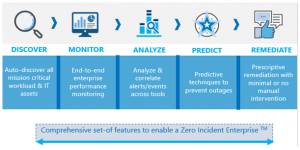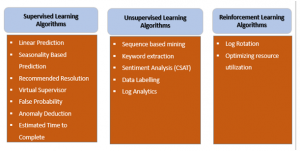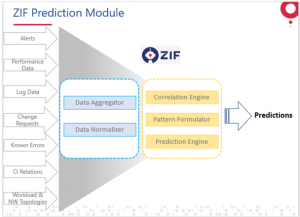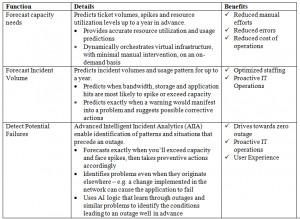
Prediction for Business Service Assurance


AIOps uses several technologies like Machine Learning and Big Data to automate the identification and resolution of common Information Technology (IT) problems. The systems, services, and applications in a large enterprise produce volumes of log and performance data. AIOps uses this data to monitor the assets and gain visibility into the behaviour and dependencies among these assets.
According to a Gartner publication, the adoption of AIOps by large enterprises would rise to 30% by 2023.
ZIF is an AIOps based TechOps platform that enables proactive detection and remediation of incidents helping organizations drive towards ZIF.
ZIF comprises of 5 modules, as outlined below.

At the heart of ZIF, lies its Analyze and Predict (A&P) modules which are powered by Artificial Intelligence and Machine Learning techniques. From the business perspective, the primary goal of A&P would be 100% availability of applications and business processes.
Let us understand more about thePredict module of ZIF.
Predictive Analytics is one of the main USP of the ZIF platform. ZIF encompassesSupervised, Unsupervised and Reinforcement Learning algorithms for realization of various business use cases (as shown below).


Through its data ingestion capabilities, the ZIF platform can receive and process all types of data (both structured and unstructured) from various tools in the enterprise. The types of data can be related to alerts, events, logs, performance of devices, relations of devices, workload topologies, network topologies etc. By analyzing all these data, the platform predicts the anomalies that can occur in the environment. These anomalies get presented as ‘Opportunity Cards’ so that suitable action can be taken ahead of time to eliminate any undesired incidents from occurring. Since this is ‘Proactive’ and not ‘Reactive’, it brings about a paradigm shift to any organization’s endeavour to achieve 100% availability of their enterprise systems and platforms. Predictions are done at multiple levels – application level, business process level, device level etc.

Predict module categorizes the opportunity cards into three swim lanes.
For more detailed information on GAVS’ Analyze, or to request a demo please visithttps://zif.ai/products/predict/
References:https://www.gartner.com/smarterwithgartner/how-to-get-started-with-aiops/

“ Vasu heads Engineering function for A&P. He is a Digital Transformation leader with ~20 years of IT industry experience spanning across Product Engineering, Portfolio Delivery, Large Program Management etc. Vasu has designed and delivered Open Systems, Core Banking, Web / Mobile Applications etc.“
Please complete the form details and a customer success representative will reach out to you shortly to schedule the demo. Thanks for your interest in ZIF!